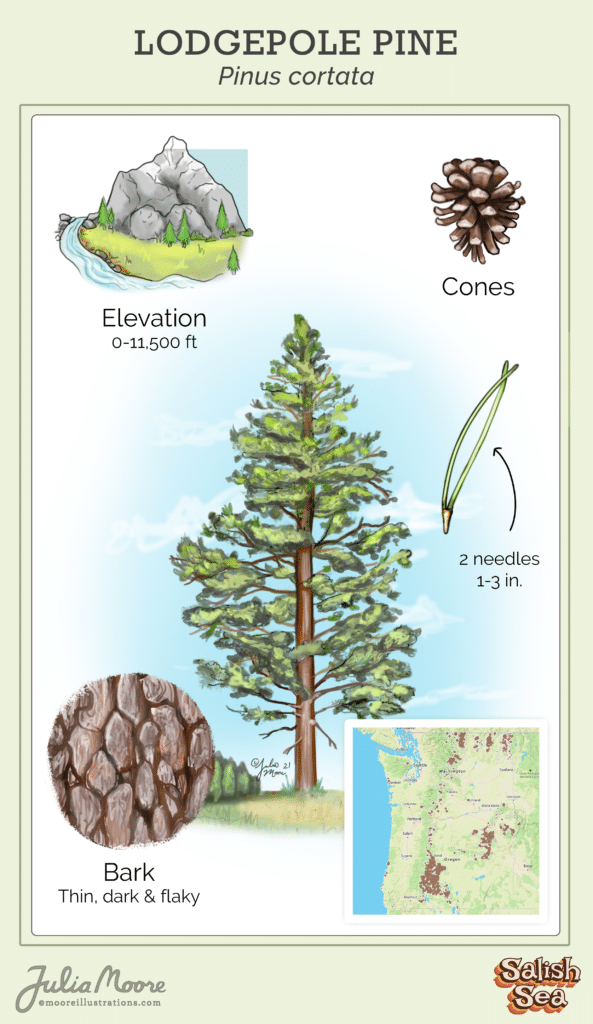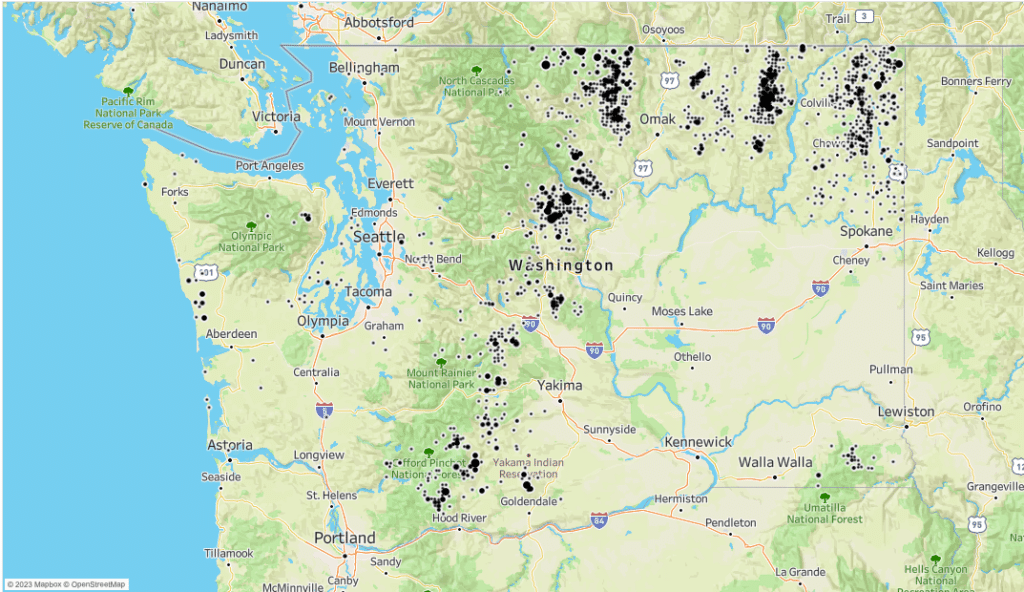Lodgepole Pine
Pinus contorta

Description
Lodgepole Pine are one of the most adaptable species of trees, as they are the first to regrow after a wildfire. Pitch that the tree creates seals the cones, making a protective encasement until the seeds are ready to be released (Naturallywood). In addition to thriving in areas that are dry and get a little heated from time to time, Lodgepole Pine are also found in environments that have very moist soils as well. In such areas where the soil is damp and soft, uprooting can be a danger.
In the northern regions such as in Alaska, the Lodgepole pine is a dominant species, whereas further south such as in California it is found to be co-dominant or subdominant among other species.
There are four different subspecies that exist on the west coast including contorta, latifolia, murrayana, and bolanderi.
Cones (Female)
• Have sharp pricks
• Asymmetric and ovoid when young
• Rounder when matured
• 1.2 to 3 in. long
• Tan to light red-brown
Cones (Male)
• Cylindrical
• Reddish
• 0.2 to 0.6 in. long
• Grow in clusters
Leaves (Needles)
• Yellow-green to dark green
• Grow in pairs
• Twisted
• Sharp
Bark
• Color ranges from brown, grey, or red brown
• Scaley or flakey
• Small, irregular plates
• May peel off in small layers
Lodgepole Pine Distribution in Washington and Oregon

